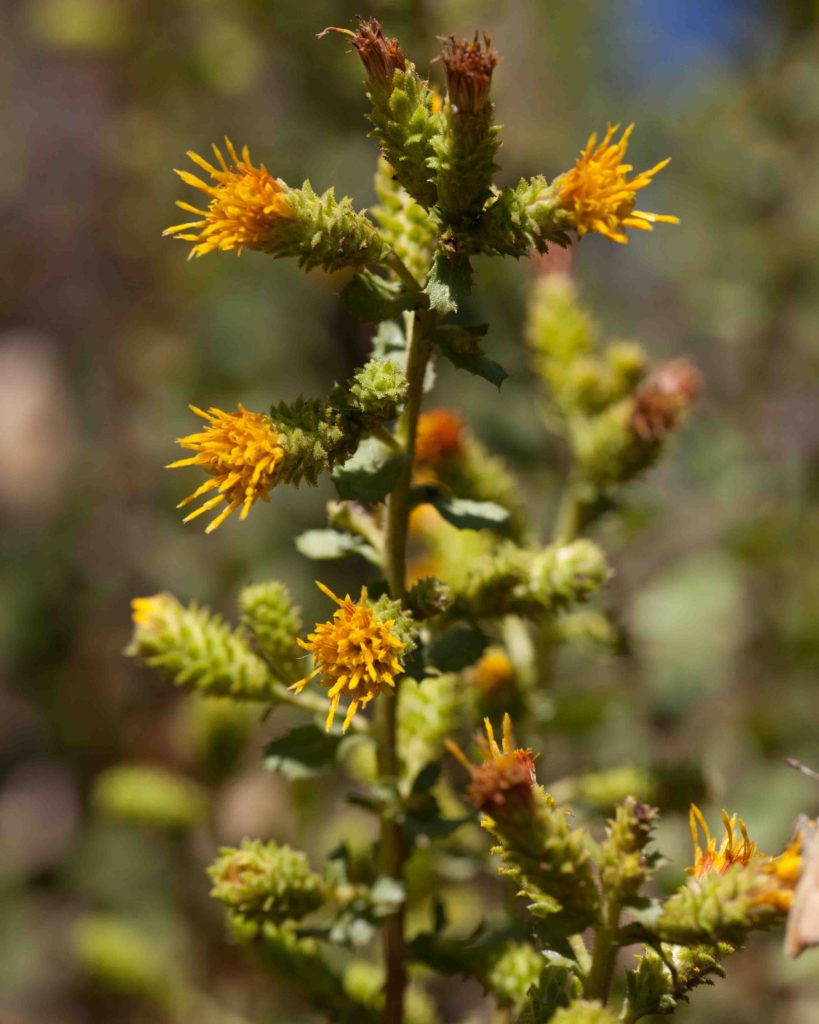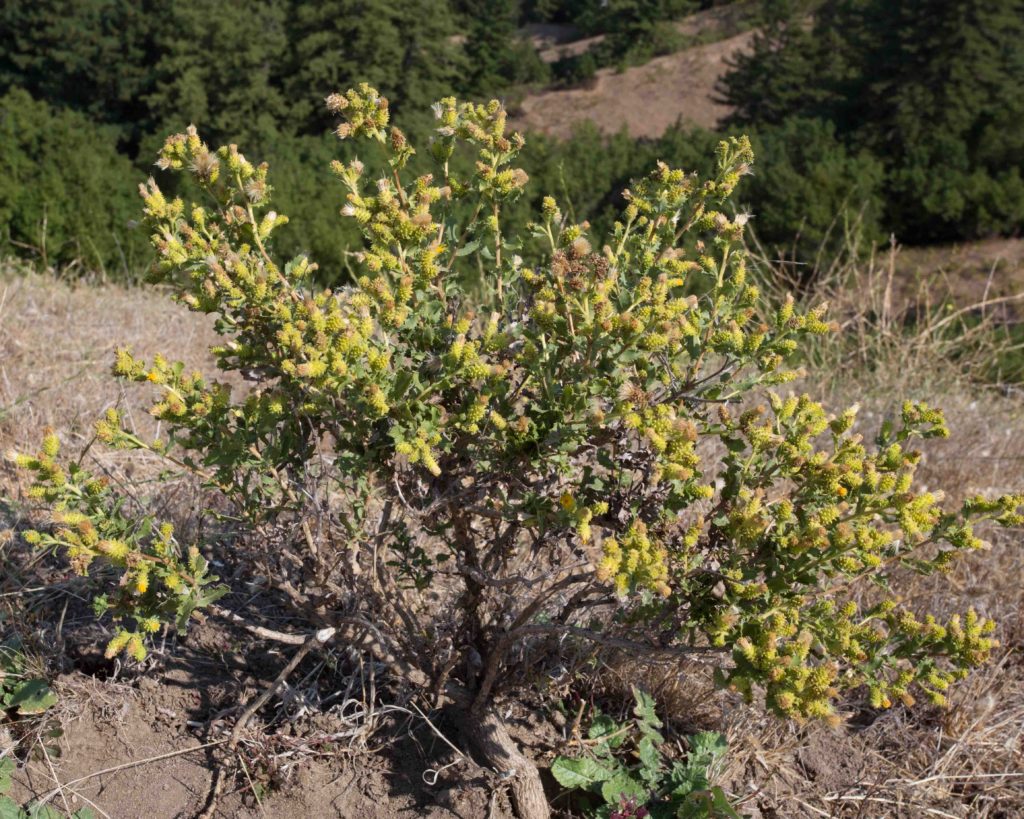Asteraceae: Sunflower Family – Astereae Tribe: Hazardia, Isocoma & Lessingia
The Sunflower family is a very large family with over 25,000 members. Botanists subdivide the family into a number of tribes, of which 14 are present in Monterey County. The Astereae (Aster tribe) includes a diverse range of plants, some of which have clearly daisy-like flowers and others, even if the same genus, which do not. This page includes some plants with disk flowers only.
Sawtooth Goldenbush – Hazardia squarrosa var. squarrosa
Blooms:
Aug–Oct
Plant Height:
30–225 cm
Flower Size:
Small clusters
Origin:
Native
Habitat:
Scrub & chaparral
Notes:
This can be a fairly tall large shrub. It has tough, serrated, ovate to obovate leaves with sharply toothed margins. It has discoid flowers (no ray flowers). The thick, recurved phyllaries are distinctive, and make it easy to distinguish this species from the two Isocoma species which otherwise it resembles. Caution: there are two species of Ericameria that are also named “Goldenbush”.
Alkali / Desert Goldenbush – Isocoma acradenia var. bracteosa
Blooms:
Aug–Nov
Plant Height:
< 80 cm
Flower Size:
Medium cluster
Origin:
Native
Habitat:
Alkaline soils, southeastern Monterey
Notes:
This has similar flowers to Coastal Goldenbush (Isocoma menziesii var. vernonioides, see below), except that the phyllary tips are swollen. The leaves are noticeably different, the upper leaves becoming entire and much reduced in size. Found in the extreme southeast of the county and at the top of Mustang Grade. Caution: there are two species of Ericameria that are also named “Goldenbush”.
Coastal Goldenbush – Isocoma menziesii var. vernonioides
Blooms:
June–Dec
Plant Height:
< 120 cm
Flower Size:
Medium cluster
Origin:
Native
Habitat:
Dry slopes in grassland and coastal scrub
Notes:
In this plant, the inflorescences are in clusters of yellow discoid flowers (there are no ray flowers). It has an erect stem with small, oval, clasping leaves. The leaves are stiff, sharply toothed, and clustered in axils (sometimes so dense as to obscure the stem). Phyllaries are lanceolate, with acute tips that are appressed to the head, not reflexed as in Sawtooth Goldenbush (Hazardia squarrosa, see above). Caution: there are two species of Ericameria that are also named “Goldenbush”. Photos #3-4 by CJH.
Common Lessingia – Lessingia pectinata var. pectinata
Blooms:
June–Sept
Plant Height:
5–70 cm
Flower Size:
Small
Origin:
Native
Habitat:
Sandy soil
Notes:
Common Lessingia is immediately recognizable by its small, bright yellow flower heads comprising 15–30 disk flowers, each with a deep maroon base. The head is described as “radiant”, which means that the disk flowers on the periphery are much enlarged and may be (although not in this case) bilaterally symmetrical. [A clearer example of radiant heads will be found in the Chaenactis genus.] The differences between the two variaties of Lessingia pectinata are subtle. This one has red to dark brown stems, and leaves that can be up to 1.5 cm long. The ends of the stems can be glandular or sparsely hairy. The phyllaries of both varieties can be glandular. Photo #3 by CJH.
Valley Lessingia – Lessingia pectinata var. tenuipes
Blooms:
June–Sept
Plant Height:
5–70 cm
Flower Size:
Small
Origin:
Native
Habitat:
Coastal scrub, woodland, chaparral, occasionally sandy soil
Notes:
The flowers of Valley Lessingia are effectively identical to those of Common Lessingia (var. pectinata, see above). The differences between the two varieties are subtle. This variety has green or tan stems, and leaves that can be up to 3 cm long. The ends of the stems are not glandular, but may be sparsely hairy or tomentose. Cauline leaves may be entire, toothed or lobed. The phyllaries of both varieties can be glandular.


















